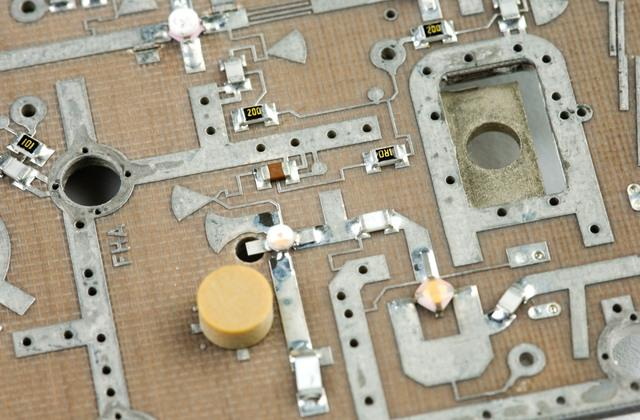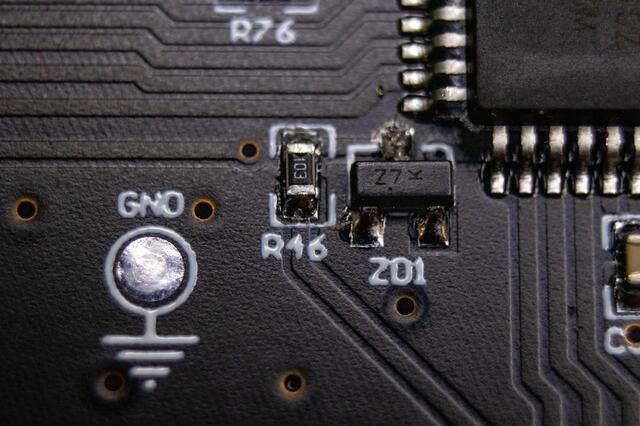Content Menu
● Introduction
● Understanding Fuji SMT Production Lines
● Importance of a Proper Installation Plan
● Key Steps in Developing an Installation Plan
● Challenges and Solutions in Installation Planning
● Benefits of a Well-Executed Installation Plan
● Best Practices for Installation Planning
● Conclusion
● FAQ
>> 1. What is an SMT production line?
>> 2. Why is installation planning critical for SMT lines?
>> 3. What are the key steps in setting up an SMT line?
>> 4. How can challenges in installation planning be addressed?
>> 5. What are the long-term benefits of proper installation planning?
Introduction
In the rapidly evolving landscape of electronics manufacturing, Surface Mount Technology (SMT) has emerged as a pivotal process for assembling electronic components onto printed circuit boards (PCBs). Among the leaders in this field is Fuji, a company renowned for its innovative SMT production lines. However, the success of these lines hinges significantly on the implementation of a proper installation plan. This article delves into the importance of having a well-structured installation plan for Fuji SMT production lines, outlining key components, benefits, and best practices.

Understanding Fuji SMT Production Lines
Fuji's SMT production lines consist of various interconnected machines and processes designed to enhance efficiency and reliability in PCB assembly.
- Components of an SMT Production Line: The primary components include solder paste printers, pick-and-place machines, reflow ovens, and inspection systems. Each machine plays a critical role in ensuring that components are accurately placed and soldered onto PCBs.
- Role of Fuji in the SMT Industry: Fuji is recognized for its advanced technology and high-speed machinery that facilitate precise component placement and ensure high-quality production standards. Their systems are designed to be adaptable to various production needs, making them a preferred choice among manufacturers.
- Technological Innovations: Fuji continues to innovate within the SMT space by introducing features such as vision systems for enhanced accuracy, automated changeover capabilities, and real-time monitoring systems that provide data analytics for performance optimization.
Importance of a Proper Installation Plan
A well-thought-out installation plan is vital for several reasons:
- Ensuring Equipment Compatibility and Efficiency: An effective installation plan ensures that all equipment is compatible with each other and configured correctly to maximize operational efficiency. This compatibility minimizes potential issues during production.
- Minimizing Downtime and Errors: Proper planning helps identify potential bottlenecks and challenges before they arise. By anticipating these issues, manufacturers can reduce downtime and errors during the setup phase, leading to smoother operations once production begins.
- Enhancing Production Quality and Consistency: A structured installation plan lays the groundwork for maintaining high production quality. By ensuring that all machines are calibrated and functioning optimally from the start, manufacturers can achieve consistent results in their output.
- Safety Considerations: A comprehensive installation plan also addresses safety protocols. Properly installed equipment reduces the risk of accidents or malfunctions that could endanger operators or damage machinery.
Key Steps in Developing an Installation Plan
Developing an effective installation plan involves several critical steps:
- Assessing Production Requirements: Understanding the specific needs of the production line is essential. This includes determining the types of components to be used, expected production volumes, and any unique assembly requirements.
- Selecting Appropriate Equipment: Choosing the right machines based on production needs is crucial. Factors such as speed, accuracy, flexibility, and compatibility with existing systems should be considered.
- Designing an Efficient Layout: The layout of the SMT line should promote a logical flow of materials and minimize unnecessary movement. A well-designed layout enhances operational efficiency and reduces cycle times. For example, placing inspection stations strategically can help catch defects early in the process.
- Calibration and Testing: After installation, thorough calibration and testing are necessary to ensure that each machine operates according to specifications. This step is vital for achieving optimal performance during actual production runs.
- Documentation and Training: Comprehensive documentation detailing installation procedures, machine specifications, and operational guidelines should be created. Additionally, training sessions for operators are essential to familiarize them with new equipment and processes.
Challenges and Solutions in Installation Planning
While developing an installation plan, manufacturers may encounter several challenges:
- Common Challenges Faced During Setup: Issues such as equipment misalignment, inadequate training for operators, or unexpected delays in equipment delivery can hinder the setup process. Additionally, integrating new technology with legacy systems can pose significant challenges.
- Strategies to Overcome These Challenges: To mitigate these challenges, manufacturers should engage skilled professionals for installation. Conducting regular training sessions for operators ensures they are well-prepared to handle new equipment. Maintaining open communication with equipment suppliers allows manufacturers to address any issues promptly.
- Utilizing Project Management Tools: Implementing project management tools can help streamline the planning process by tracking progress against timelines and budgets. These tools enable teams to collaborate effectively while identifying potential risks early on.

Benefits of a Well-Executed Installation Plan
Implementing a comprehensive installation plan yields numerous benefits:
- Improved Operational Efficiency: A structured approach to installation enhances workflow efficiency by ensuring that all components work harmoniously together. This improvement can lead to faster production cycles and increased throughput.
- Cost Savings in the Long Run: By minimizing errors and downtime during setup, manufacturers can save on costs associated with lost productivity and rework. Additionally, optimized processes can lead to reduced material waste.
- Scalability for Future Needs: A well-planned installation allows for easier scalability as production demands change. Manufacturers can adapt their lines without significant overhauls or disruptions. This adaptability is particularly important in industries where product lifecycles are short.
- Enhanced Data Collection and Analysis: Modern SMT lines equipped with advanced technology allow for better data collection during production runs. This data can be analyzed to identify trends, improve processes, and enhance overall quality control measures.
Best Practices for Installation Planning
To further enhance the effectiveness of an installation plan, manufacturers should consider adopting best practices:
- Involve Cross-Functional Teams: Engaging teams from different departments—such as engineering, operations, quality assurance, and maintenance—can provide diverse perspectives that contribute to a more robust installation plan.
- Continuous Improvement Mindset: Embrace a culture of continuous improvement by regularly reviewing processes post-installation. Gathering feedback from operators can highlight areas needing adjustment or enhancement.
- Regular Maintenance Schedules: Establishing regular maintenance schedules post-installation ensures that equipment remains in optimal condition throughout its lifecycle. Preventative maintenance can significantly reduce unexpected downtimes.
Conclusion
In conclusion, a proper installation plan is crucial for the success of Fuji SMT production lines. It not only ensures compatibility between various machines but also minimizes downtime and enhances overall production quality. By following key steps in developing an installation plan—such as assessing production requirements, selecting appropriate equipment, designing efficient layouts, conducting thorough calibration, documenting procedures, and training personnel—manufacturers can significantly improve their operational efficiency. As technology continues to advance in the electronics manufacturing sector, investing time and resources into a robust installation strategy will remain essential for achieving long-term success.

FAQ
1. What is an SMT production line?
An SMT (Surface Mount Technology) production line is a sequence of machines and processes used to assemble electronic components onto printed circuit boards (PCBs). It includes solder paste printers, pick-and-place machines, reflow ovens, and inspection systems.
2. Why is installation planning critical for SMT lines?
Proper installation planning ensures equipment compatibility, minimizes downtime, enhances production quality, addresses safety considerations, and lays the foundation for efficient operations.
3. What are the key steps in setting up an SMT line?
Key steps include assessing production requirements; selecting appropriate equipment; designing an efficient layout; performing calibration; testing; documenting procedures; and training personnel on new systems.
4. How can challenges in installation planning be addressed?
Challenges can be addressed by thorough planning involving skilled professionals; utilizing project management tools; conducting regular training; maintaining communication with suppliers; and embracing continuous improvement practices.
5. What are the long-term benefits of proper installation planning?
Long-term benefits include improved operational efficiency; cost savings through reduced errors; scalability to meet future demands; enhanced data collection capabilities; and fostering a culture of continuous improvement within manufacturing processes.




















